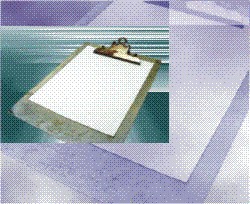| www.gosodipo.com | ||||||
| Home | Feedback | Search | About Us |
 |
||
 |
||||||
| Services | Partners | Seminars | News | Publications | Newsletters | |
 |
Seminars | |||||
|---|---|---|---|---|---|---|
|
Ecommerce: Realizing Maximum Benefits from Software Technology Ed Osuagwu
E-COMMERCE AND E-BUSINESS: definitions E- commerce is using the Internet as the primary medium for the sale and purchase of goods and services, while E-business is using the Internet as the primary medium to conduct business. ECOMMERCE MARKET SPACES: categoriesWhere one business enterprise sells to another, this is called Business to Business also known as B2B. Sale by a business enterprise to a person or consumer, this is known as Business to Customer i.e.B2C. Business to Employee known as B2E, involves sale by business enterprise to an employee. B2G/G2B i.e. Business to Government/ Government to Business involves sale by business enterprise to government. This specialized form of B2B e.g. formality in RFT/RFP/RFQ processes; government includes supra-national (EU, OECD) as well as national or regional governments. Consumer to consumer i.e. C2C, this involves sales between individuals, this can also be said to be a specialized form of B2C (classified advertisements auctions, e.g. eBay What are the E-commerce processes? There is the search, where one surf for goods and services, prices, availability, t&c. The ordering i.e. online ordering, purchase orders, the payment, which is the invoicing and payment authorisation and finally the fulfillment, this is the delivery of goods or execution of service. E-commerce Drivers, what are they?The advent of “New Economy” i.e. free and pervasive flow of information, rapid pace of change, increase in business complexity and thresholds of uncertainty is a notable e commerce driver. There also is this trend towards a knowledge – based service economy, blurring market segment and industry boundaries, reduction of the space/space continuum. The cannibalization of products services and channels, reduction in transaction costs (elimination of the middle man), which are increasingly one – to one based. New electronic channels such as internets/intranets/extranets giving rise to new electronic value chains. E-commerce also brought about the innovation in software technology and technology standardization (Web services, XML, SOAP, NET, J2EE), as well as the trend in globalisation has created a global market place. Some of the notable key trends taken from IDCThe worldwide e-commerce spending grew up to73% between 2000 and 2001, $615billion in 2001 and the forecast to pass the $1 trillion mark in 2002;this spending is expected to stay strong, with a compound annual growth rate (CAGR) of 67% from 2000 to 2005. It is noted that this growth will come from both the B2C (business to consumer) and B2B (business to business) markets and by the end of the year, 10% of the world’s population will access the internet at least once per month and by 2006 more than 1 billion people will use the internet at least once per month and e-commerce spending will pass $6 trillion. Business to Business (B2B) will continue to account for the largest share of ecommerce spending, accounting for 83% today and growing to 88% by the end of 2006,Business to Consumer (B2C) will continue to increase at a healthy 48% compound annual growth rate (CAGR), just not quite as fast as B2B. THE SELL- SIDE PLATFORM DIAGRAM
THE ISSUES CONTENDING WITH ECOMMERCE. There is no secure management of multiple catalogs and price lists for both business and individual customer, the requirements for one- one marketing (personalization) cannot be met. There is faster time to market but shorter product cycles with changing consumer demand, and there is the issue of building brand awareness. There is also the issue of security, reliabity i.e. the continuous service ability as well as flexibility to grow to meet user demand and business complexity, i.e. scalability. There is no easy maintenance and management of technology i.e. the issue of content maintenance by business users. Software technology- value propositionThe enhanced merchandising power involves content personalization, which consists of the profiling of content based on individual preferences, tailored to suit individual requirements. The improvement of security; this has to do with authentication, encryption, confidentiality and non-repudiation; Technical definition for non repudiation is “an authentication that with high assurance can be asserted to be genuine, and that cannot subsequently be refuted” The reduction in transaction costs is the integrating front end ordering systems and back end fulfillment systems, reduced labour costs, re-keying, human errors, etc. The ability to scale and grow with the business, increasing orders and customer satisfaction, which result from, increased reliabity, availability and security. Enhanced business analytics, i.e. usage analysis, management information, customer segmentation, corporate strategic branding, retail space and ebusiness infrastructure The Microsoft Solution for Internet Business (MSI) Microsoft content management server: this serves up pages based on profile, manage the distribution of content to several web farms simultaneously, ensuring that content is accurate and up to date. Also enables business user to create, manage, and publish their own content directly on the web site by using a browser-based interface. Microsoft commerce server: this provides user personalization and stores user profiles, catalogs services and reporting, as well as customer segmentation, target cross-selling and up selling. Microsoft SQL server enterprise edition and Microsoft window 2000 advanced server: this is for load balancing and clustering support in window 2000 advanced server and SQL server 2000 enterprise edition, increase fault tolerance, providing the reliability to maximize uptime and the scalability to ensure maximum site throughput. |